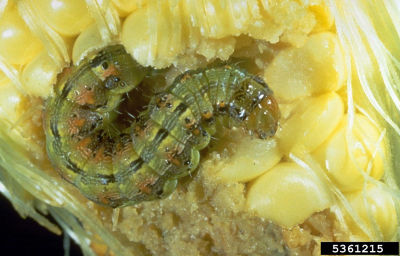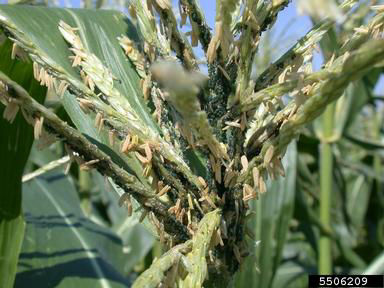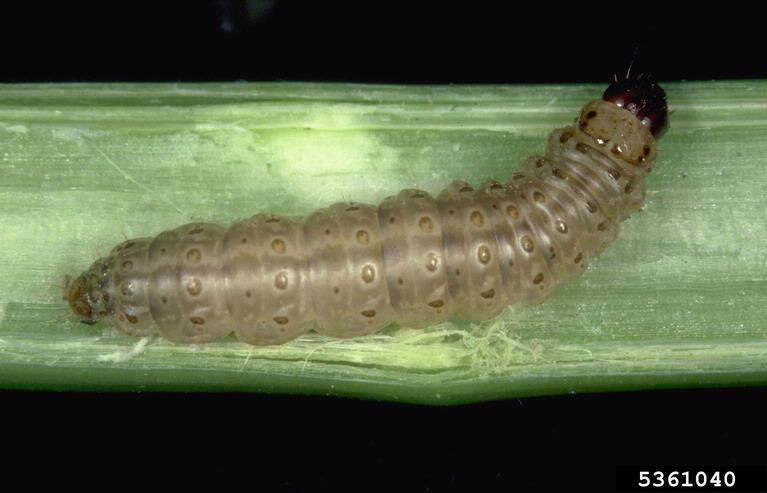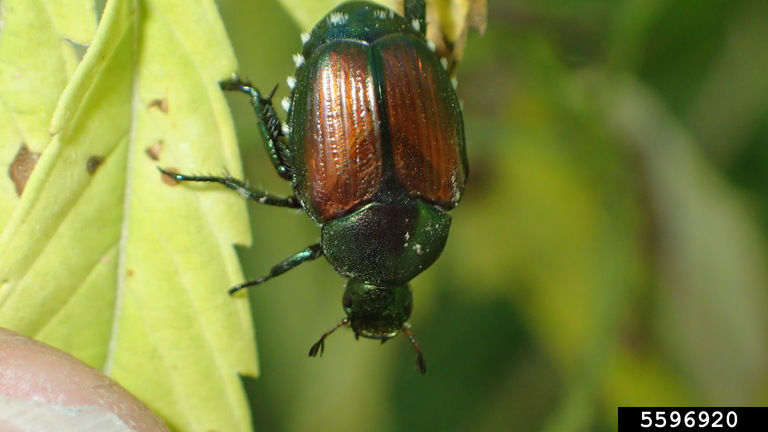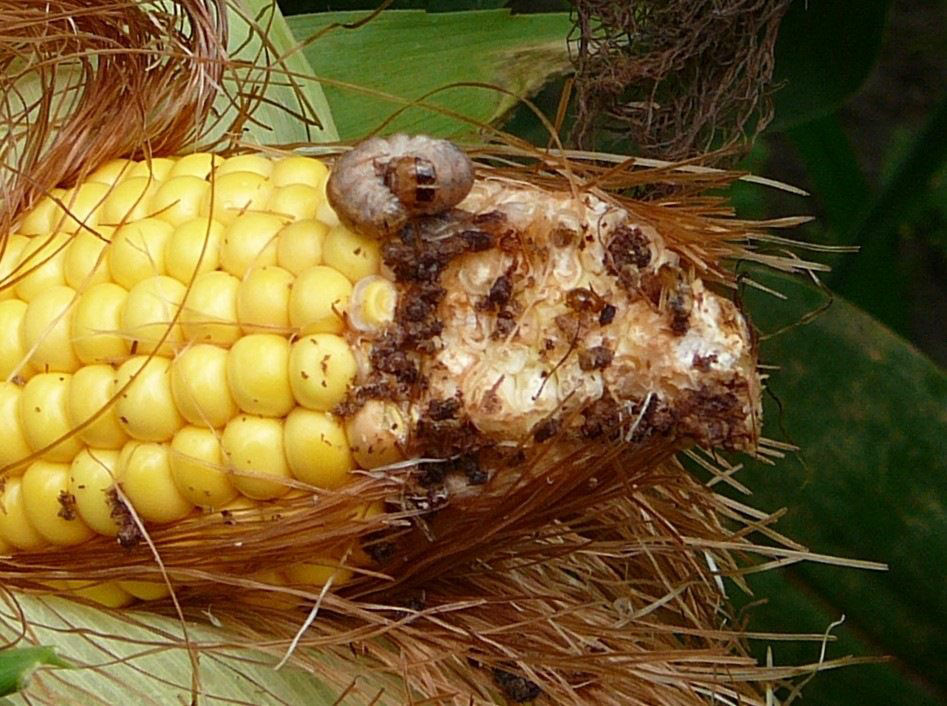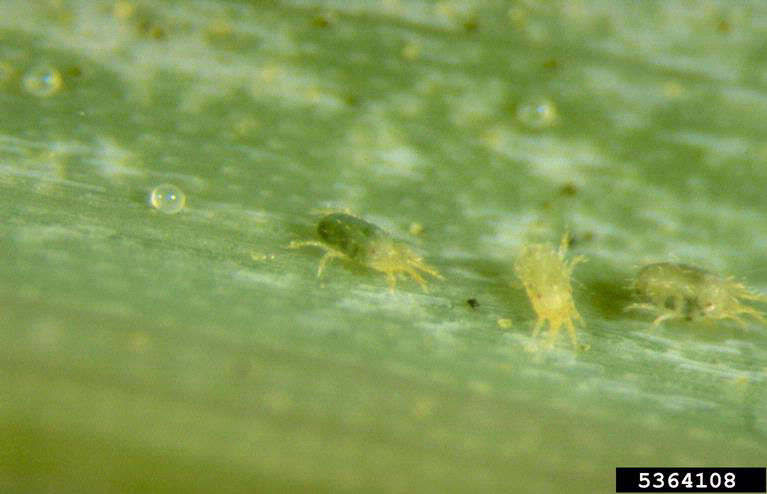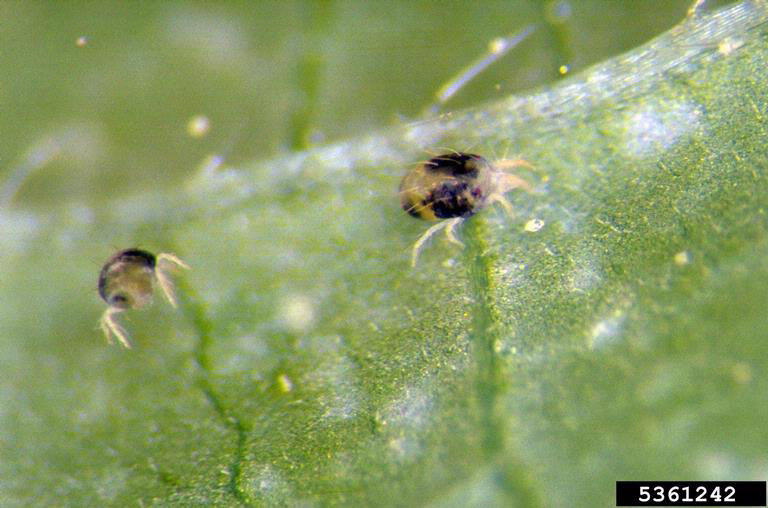Identification of Late Season Corn Insects
September 13, 2021
Late season insect infestations can be impacted by corn maturity. Particularly, corn that is planted late or maturing later than surrounding fields. Later planted fields are very attractive to females of the second-generation corn borers, corn earworms, and fall armyworms as green silks are preferred oviposition sites. Additionally, corn rootworm adults also prefer green silks or pollinating corn and these fields can become ovipositional sites that may result in significant injury the following season.
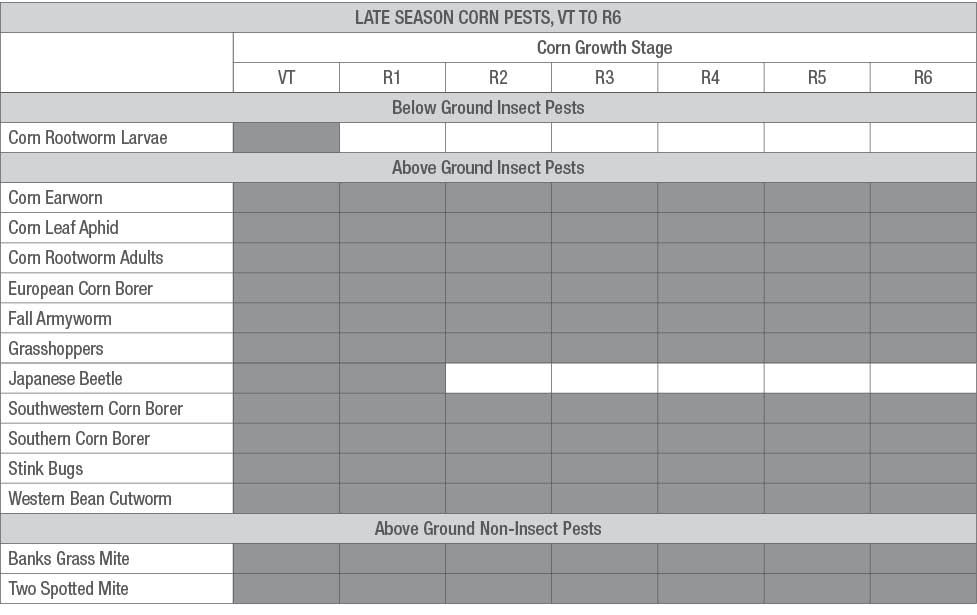
Click on the tab to identify Late Season Corn Insect Pests, VT to R6
Corn earwormexpand_more
Corn leaf aphidexpand_more
European corn borerexpand_more
Fall armywormexpand_more
Grasshoppersexpand_more
Japanese beetleexpand_more
Southwestern corn borerexpand_more
Southern cornstalk borerexpand_more
Western bean cutwormexpand_more
Banks grass miteexpand_more
Two spotted spider miteexpand_more
